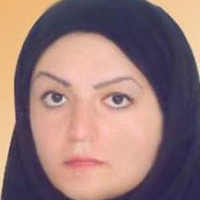Investigating Settlement Patterns in Silveh Region of Piranshahr, South of Lake Urmia based GIS analysis
The beginning of settlement in the Silveh River Basin dates back to the Neolithic period and then the Late Chalcolithic period. With the end of the sixth millennium and the beginning of the fifth millennium BC, the region has been densely populated by human societies. The study of the settlement model helps to study the formation of ancient sites in the environmental context. In fact, the impact of environmental factors on the formation of settlements cannot be ignored. The Chalcolithic sites represent the Dalma Period in the northwest. The study of the early Chalcolithic pottery traditions in Silveh River Basin indicates cultural relations with other regions of northwestern Iran and the Central Zagros from one hand and indicates cultural relations with northern Mesopotamia, Azerbaijan and eastern Anatolia in the Early Chalcolithic period on the other hand. By conducting an archaeological study of Silveh region and analyzing the archaeological data of the settlements in it, a new perspective has emerged in the archaeological studies of the region and Piranshahr. In this way, the study and analysis of cultural materials obtained from the region can partially explain the relative chronology of cultural periods in the region.
-
Chronology of Shams Tabrizi Khoy Site based on Pottery Obtained from Archaeological Excavations
*, Ardeshir Javanmardzadeh, Mehdi Hosseyni Niya, Fatemeh Malekpur
Parseh Journal of Archaeological Studies, -
Absolute (14C AMS) and Relative Chronologies of Barveh Tepe in the Upper Lesser Zab Basin and a Study of Painted Bronze Age Ceramics(Based on the Second Season Excavation)Season Excavation)
*, Barbara Helwing
Journal of Archaeological Studies, Summer-Autumn 2023 -
Pottery Making Technology from Late Chalcolithic Period in Girdi Ashoan tepe,(North west Iran),Based on XRD,XRF and Petrography Techniques
*,
Journal of Research on Archaeometry,



